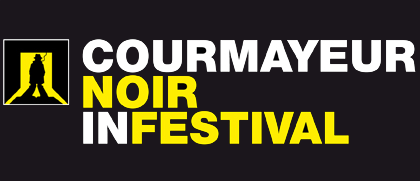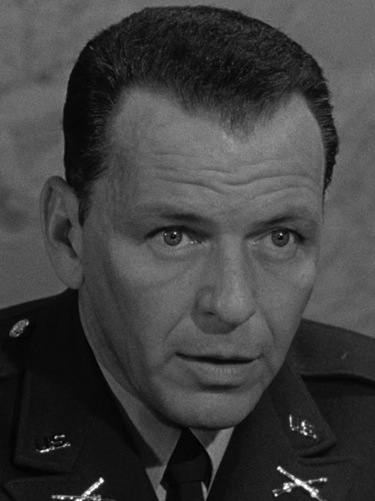The Magnificent Three
April 21, May 6 and December 12: three birthdates one after the other exactly one hundred years ago, marking a memorable year for the history of film and entertainment. The film projector was just twenty years old, and D. W. Griffith was already bringing out the blockbuster that would radically change the new art medium: The Birth of a Nation. But neither Anthony Quinn (born in Chihuahua, Mexico, on April 21) nor Orson Welles (born in Kenosha, Wisconsin, on May 6), nor Francis Albert Sinatra (born to a Sicilian father in Hoboken, New Jersey on December 12), had any idea what fate held in store for them.
In a such a year of commemorations, we could hardly ignore a striking coincidence: in very different ways, these "Magnificent Three" influenced the history of genre films, coming at them from equally different angles, and all three had a vibrant if contradictory relationship with Italy.
The macho Anthony Quinn, that brawny, acrobatic hero who gets crushed by the weight of history and his own destiny, seems to us to represent that freedom to flout the canons and the limits set down by the modern noir genre, becoming a hybrid form of its original nature. We recognize its dark power in the rebel Zapata’s anger or Zampanò’s blind fury; in the lucidity of the gunman and the patience of the detective.
Frank Sinatra is a completely different case, a complex figure with the purest of talents whose birthday falls on the last day of our festival. Sinatra gets special attention at Courmayeur Noir because the trajectories of the man, the actor and the crooner are intertwined, and all that glitters is also darkness, making for a complicated picture. What we like about ‘Angel face’ is his playing the mocking Fool in a comedy of errors that blended Cosa Nostra and Hollywood, America and Italy, guns and bel canto, the man’s legend and his fragility - all in a well shaken cocktail in which the models of classic noir became daily gestures and behavior. Studied, or natural? There’s an enigma for you: enlightenment follows in the words of an expert, British film critic Adrian Wootton.
Download
All The Way. Frank Sinatra by Adrian Wootton
By Giorgio Gosetti
April 21, May 6 and December 12: three birthdates one after the other exactly one hundred years ago, marking a memorable year for the history of film and entertainment. The film projector was just twenty years old, and D. W. Griffith was already bringing out the blockbuster that would radically change the new art medium: The Birth of a Nation. But neither Anthony Quinn (born in Chihuahua, Mexico, on April 21) nor Orson Welles (born in Kenosha, Wisconsin, on May 6), nor Francis Albert Sinatra (born to a Sicilian father in Hoboken, New Jersey on December 12), had any idea what fate held in store for them.
The Mexican-born Quinn, whose mother was half-Indian, broke into film in 1936, after stints as a boxer and a painter, while Welles, the child prodigy, had made his stage debut at the age of three, then made his name as an actor, director and illusionist, and made his first film in 1934. Sinatra got his start as a comedian and a singer, so good he became known as ‘The Voice’, and was adopted by Hollywood only in 1944, after fighting "behind the lines" entertaining U.S. troops.
So, to underscore just how extraordinary this year 2015 is, we asked the Istituto Luce - Cinecittà to partner with us and create a trailer based on a different film personality for each day of the festival, shown in the context of his or her time, with period stock footage that takes us back to their heyday, an era during which Italian film was discovering society’s dark underside and piercing veils of a tacit censorship, fashioning that unauthorized history of the Italian noir that has often been the subject of investigation since, sparking civic indignation and the search for truth. It’s a sort of parallel festival program interspersing each day’s events with rare footage uncovered by the artful sleuths at the film archives.
In a such a year of commemorations, we could hardly ignore a striking coincidence: in very different ways, these "Magnificent Three" influenced the history of genre films, coming at them from equally different angles, and all three had a vibrant if contradictory relationship with Italy.
The macho Anthony Quinn, that brawny, acrobatic hero who gets crushed by the weight of history and his own destiny, seems to us to represent that freedom to flout the canons and the limits set down by the modern noir genre, becoming a hybrid form of its original nature. We recognize its dark power in the rebel Zapata’s anger or Zampanò’s blind fury; in the lucidity of the gunman and the patience of the detective.
As for Welles, the fact that he is a peerless master of the cinematic art and a model for us today goes practically without saying. He needs only appear on the screen, in the first shot he allows himself in his most intense films, for the images themselves to convey the troubled, titanic ambitions and the dark power that run through his oeuvre. This year the entire world has finally bowed to Welles’ genius, and we, at year’s end, can do no more than offer our own tip of the hat to the filmmaker, a nod no less reverent than the world’s collective tribute.
Frank Sinatra is a completely different case, a complex figure with the purest of talents whose birthday falls on the last day of our festival. Sinatra gets special attention at Courmayeur Noir because the trajectories of the man, the actor and the crooner are intertwined, and all that glitters is also darkness, making for a complicated picture. What we like about ‘Angel face’ is his playing the mocking Fool in a comedy of errors that blended Cosa Nostra and Hollywood, America and Italy, guns and bel canto, the man’s legend and his fragility - all in a well shaken cocktail in which the models of classic noir became daily gestures and behavior. Studied, or natural? There’s an enigma for you: enlightenment follows in the words of an expert, British film critic Adrian Wootton.
Download


